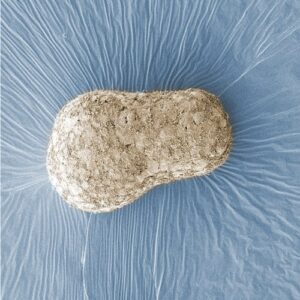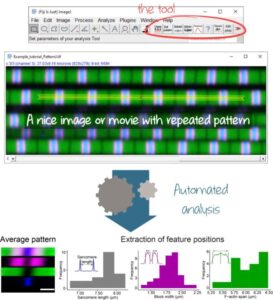Drosophila has proven to be a powerful model for modelling the interactions between bacteria and the eukaryotes they infect and particularly for dissecting innate immune signalling pathways. In most previous studies, two modes of contamination have been used. Animals were infected either by septic injury with direct introduction of the bacteria into the interior cavity or by forced ingestion of bacteria, both of which are not very physiological. In a recent article published in iScience, Bernard Charroux, Fabrice Daian and Julien Royet analyze the behavior of fruit flies simply put in contact with bacteria potentially pathogenic to them.
To do so, the authors developed a binary feeding assay in which starved flies have a choice between two sweet solutions, one axenic and the other contaminated with the Erwinia carotovorabacterium. Using a video recording, the authors observed that adult flies adopt a stereotypical behaviour towards these two food sources. Surprisingly, fruit flies are first attracted to the solution contaminated by bacteria that they ingest. After about an hour, the flies move away from the contaminated solution and move closer to the axenic solution, which they feed on almost exclusively. Genetic analyses show that olfaction, and more specifically, the Gr63a receptor and the Gaqtransduction protein, regulate the initial attraction phase.
The subsequent repulsive phase, on the contrary, involves the taste system. The combined use of genetic manipulation and calcium imaging has demonstrated that bitter neurons, the taste receptors Gr66a and Gr33a, and the leucokinin neuropeptide are necessary for the development of the aversive phase. By genetically decreasing octopamine (mammalian norepinephrine equivalent) signaling in bitter neurons, the authors were able to reveal that the duration of the latency phase before the appearance of the repellent phase depends on the diet-dependent depotentiation of bitter neurons.
To know more :
2020 May 12;23(6):101152. doi: 10.1016/j.isci.2020.101152. iScience.
Charroux B, Daian F, Royet J.
-
Contact
Bernard Charroux – bernard.charroux@univ-amu.fr
Julien Royet – Julien.royet@univ-amu.fr



